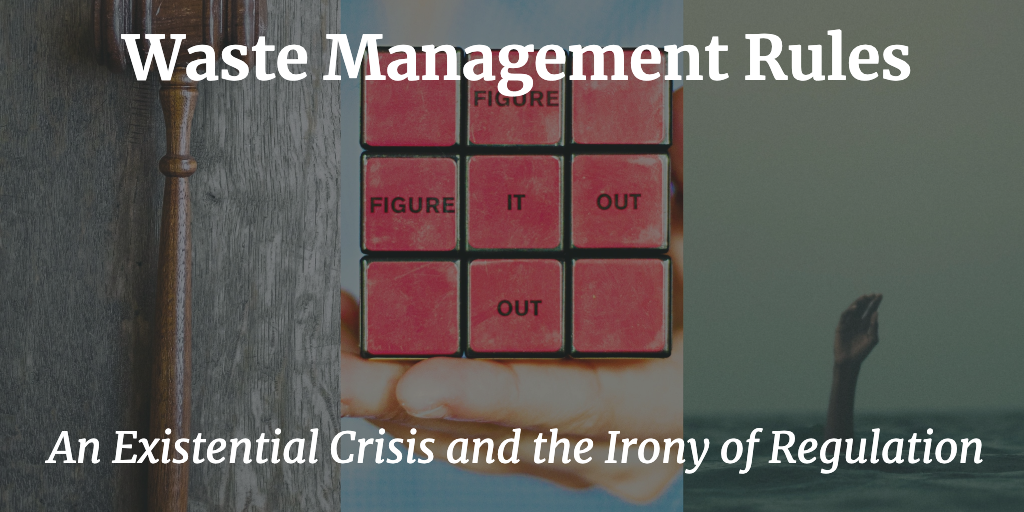

An existential crisis related to waste management rules may entail a feeling of perplexity, skepticism, or ambiguity regarding the purpose and efficacy of waste management regulations in our society.
On one hand, waste management rules are designed to promote sustainability, protect public health, and conserve natural resources by reducing the amount of waste generated and ensuring proper disposal of waste. These rules aim to create a cleaner and healthier environment for current and future generations.
On the other hand, waste management rules can be complex, confusing, and difficult to enforce. They can also be subject to political pressures and competing interests, which may result in inconsistent or ineffective implementation. This can lead to a sense of frustration or disillusionment with the ability of waste management rules to truly address the underlying problems of waste generation and disposal.
The policies are drafted superficially to benefit all the stakeholders and also not to hamper any industrial growth. On the other hand, the policies are vague enough to circumvent any violation and offer loophole to escape. The one who violates the rules are hardly punished and the one who follows the rule is hardly rewarded. This is the irony of the regulation. There are numerous examples of such violations of waste management rules and few examples of 100% adherence to such regulation. In a different series, we will showcase the real case studies of such violation and adherence.
The new E-Waste Regulation 2023 has removed dismantlers from Extended Producer Responsibility (EPR), which means that producers are now responsible for disposing of products at the end of their life, and only recyclers can participate in EPR. However, this raises the question of whether recyclers can effectively recycle electronic waste without dismantling it. There are various methods for recycling e-waste, including physical separation of printed circuit boards (PCBs) from components, shredding of PCBs with components followed by hydrometallurgy and pyrometallurgy, and other processes for extracting different metals from different types of e-waste. However, the regulation does not provide clear definitions of who is responsible for what, and the lack of clarity may lead to some entities claiming to be recyclers without actually investing in the necessary machinery. Recycling e-waste requires a significant investment in machinery, which can cost crores of rupees. Alternatively, one can choose to spend only a few lakhs on basic machinery and still claim to be a recycler. However, to carry out the recycling process effectively and responsibly, the former option is necessary. This could result in e-waste being channeled into the informal sector under the pretense of recycling, which could undermine the effectiveness of the regulation.


On the contrary, e-waste is often sold to the highest bidder at auctions or tenders under the guise of being recycled. Despite significant differences between dismantlers and recyclers, consumers tend to conflate the two. Legally, e-waste is transferred to the highest bidder for recycling with 100% compliance on paper, yet in reality, a significant portion of it is not recycled and instead disappears into the informal sector. The regulation only mandates that e-waste be given to authorized e-waste companies with proper documentation. However, as long as one possesses the required paperwork, they are considered authorized, and the regulation does not provide any penalty or violation clauses for companies or consumers who dispose of e-waste through bidding for recycling, even if the waste ultimately ends up in the informal sector and reenters the economy.
To address this crisis, it is important to engage in open and honest discussions about the strengths and weaknesses of waste management rules and to work towards solutions that are both effective and equitable. This may involve increasing public awareness about waste management issues, promoting sustainable practices at the individual and community level, and advocating for policy changes that prioritize environmental protection and social justice.
To summarize, rules and regulations should be applied equally to all entities, regardless of their size and investment. However, in practice, larger entities may be more likely to violate these rules (penalties are peanuts), while smaller entities face more risk.

